“It is evident that the Iraqi Ba’ath regime used chemical and biological weapons during the eight-year war with Iran, resulting in tens of thousands of casualties, devastatingly affecting the war. The Iranian army, after suffering its biggest military defeat on the southern fronts, particularly in eastern Basra and Karbala, was compelled to shift its focus to another front and resumed its attacks through Kurdistan. This forced Iraq to redirect all its military forces to Kurdistan. The Ba’ath regime, facing the …prospect of a tough, brutal war with the Peshmerga on one side and Iranian troops on the other, retaliated by targeting Kurdish civilians for the defeats it had suffered.
A series of military attacks commenced, the deadliest and most brutal of which was the chemical bombardment of Kurdistan areas from 15/4/1987 to 27/5/1987. Chemical attacks in areas” like Sargaloo and Bargaloo, Gojar Mountain, Mawat, Jafaran, Sirko Blee, Malekan Valley, Heldan, and Yakhsamar, with the most severe being in the Sheikh Wasan and Balesan regions. Jafayati Valley and Sharbazher were the first areas in Kurdistan to be chemically bombed by artillery on April 15, 1987, and the people of that area were explicitly aware of the possibility of a chemical attack due to prior news of Iraqi chemical attacks in the war.
Eyewitness Account of the Chemical Attack
One of the witnesses to the chemical attack said, “We were advised to place wet cloths over our faces and eyes, light fires, or move away from the impacted areas. When the bombing happened, it was unlike usual; it did not make a loud noise, and we didn’t realize it was a chemical weapon until we smelled the rotten scent of apples and garlic. Numerous bombs were dropped on us, but they didn’t seem to have much effect. A day after the chemical attack on Jafayati Valley and Sharbazher, on April 16, 1987, two villages in the Khoshnawati region (Balesan and Sheikh Wasan) were targeted and chemically bombed by the regime forces. In the afternoon of that day, after the villagers returned from their lands and fields to rest before sunset, the sound of airplanes grew closer and closer. Some stayed in their homes, while others headed for shelters. The planes bombed these two villages with chemical weapons.
The video of the bombing of Balesan Valley, recorded by a member of the family of one of the Ba’athist advisors named Anwar Beg Betwata, shows a vast column of smoke, with clouds of white, pink, and white.”
“At that time, as the sun set, a cold wind blew from the mountain, bringing a strange scent. Initially, it smelled like flowers, but later, it changed to the smell of apples and garlic. Other witnesses insist it smelled like pesticide. An elderly woman from Balesan recounted, ‘Suddenly, the air turned dark, and we couldn’t see anything. No one could see anyone; the whole world was dark. Faces and eyes were all black, and people suffered painful swelling under their eyes. We were vomiting, the chests of women were severely burned and hurt, and yellow fluid was coming out of their eyes and noses. Many survivors suffered from severe vision problems; some were completely blind for over a month, and some are still blind to this day. In the village of Sheikh Wasan, survivors told of a woman who was blind in both eyes, walking while tightly holding her dead child, not knowing he was dead. Some villagers fled to the mountains where they died, and those near the bomb site died instantly.’ After the chemical attack, the next morning, Ba’athist infantry forces and local militia went to Balesan, looted people’s homes, then destroyed them. At the same time, the Army Engineering Corps blew up the village of Sheikh Wasan with dynamite to disperse the chemical gas.”
“Residents and Injured Flee to Nearby Cities Following Chemical Attack”
The residents and injured from the previous night fled to Sulaymaniyah, Rania, Erbil, and Shaqlawa, with most heading to the city of Rania, where a hospital was available. On the way, surrounding villages, including the people of Baro, sent dozens of tractors to transport the wounded. When they reached the Saruchawa community, they stopped to bury 50 bodies of those who had recently died. The doctors provided eye drops to wash the wounds, but they did not alleviate their effects. “It was a restless night; fires were lit in most neighborhoods to prevent the chemical gas from affecting the injured. The Rania hospital was filled with cries and screams.” The bravery of the people of Rania must be acknowledged for courageously assisting the victims from Sheikh Wasan and Balesan.
“At dawn, intelligence forces visited the hospital and ordered the transfer of the wounded to the Erbil emergency hospital. They were told to claim that Iran had used chemical weapons. There were 346 of them, excluding those who had immediately become martyrs.”
After arriving at the hospital, doctors began treating the wounded and injected them with atropine. Soon, Lieutenant Hassan al-Douri, a lieutenant in the Erbil security organization and a member of the Ba’ath Party’s regional command, arrived at the hospital along with the Erbil governor and an emergency military force. After extensive questioning and investigation with the hospital staff and doctors, the lieutenant ordered the wounded to be transferred to an army hospital. However, this decision was met with objections from the doctors, and ultimately, the transfer was carried out under the threat of weapons.
Nevertheless, they never reached the hospital. According to reports, women and children were separated from the men. Some were taken to the Erbil security office, others to an old police center in Makhmour, and later transferred to an unknown location. The men, numbering 70-75, were never seen alive again.
The wounded women and children were left in a location near Khalifan in the Alane Valley. There, they found their relatives and acquaintances who had headed towards Sulaymaniyah. The people of Khalifan sheltered some of them. A witness named Najibah Faqi from the village of Sheikh Wasanan said: “In Khalifan, we took refuge in a man’s house and stayed there for some time.”
After the great uprising of the people of Kurdistan in the spring of 1991, in September of the same year, following the discovery of the first mass grave of 23 martyrs from the Shaqlawa district, several victims and missing persons from the chemical attack in the Balesan Valley, including 25 people, were found in a mass grave at the Erbil tar factory cemetery on 18/9/1991. Based on information received from the Erbil emergency hospital, the victims of the chemical attack in Sheikh Wasanan and Balesan are as follows:
Twenty-four people were killed in Balesan as a direct result of chemical weapons buried in a mass grave in the village.
One hundred three people in Sheikh Wasanan were killed directly by chemical weapons, including more than 50 people buried in a mass grave in the village of Saruchawa. The victims included 33 children under four years old, 28 children aged 5 to 14, and 9 people aged 60 to 80.
9 or 10 people died in Rania Hospital.
Four deaths upon arrival at the Erbil emergency hospital.
Between 64 to 142 deaths in the Erbil security prison, where they died due to lack of treatment, starvation, and neglect, including two older women named Salma Mustafa Hamid and Adela Shenko and a 9-year-old girl named Huset Abdullah Khidr.”
70-75 young men disappeared in the Erbil – Makhmur security center, including 22 from Balisan, 50 from Sheikh Wasan, and three others from the surrounding villages of Balisan.
A large number of children have been abandoned in the Khalifan plain.
According to the information obtained, the number of victims and wounded from the chemical attacks in the Balisan Valley and Sheikh Wasareachedes 435 people who were directly or indirectly exposed to chemical weapons on April 16.”
Following the attacks on Jafayati Valley, Sharbajir, and Balesan Valley, the regime not only expanded the scope of its attacks but also intensified them. On May 7, 1987, the Kurdistan Regional Government bombed the areas of Jafaran, Qardash, Bergalou, Haldan, Yakhsamar, and Sikanian with chemical weapons, causing significant damage.
On June 19, 1987, the regime attacked the Malakan Valley (Saruchawa Baran), a few miles east of Balesan and Sheikh Wasanan, resulting in about 30 people losing their sight and the residents of the area being displaced. It is noteworthy that on May 15, 1988, an attack on the village of Warê in the Betwata area resulted in 36 deaths.
On July 31, 1988, Qasimaweh, Balesan, and Khêtî were again exposed to chemical weapons during the Anfal operation. Physicians for Human Rights state regarding the chemical substances used: Based on the type of chemical substances used in these areas, the symptoms reported by the villagers generally correspond to the effects of mustard gas. However, there are reports that some victims may have died immediately due to the use of nerve gas, as mustard gas, even if highly concentrated, is not lethal. It would take at least half an hour to be fatal.
“Chemical Attack on Balesan Valley and Sheikh Wasan in the Documents of the Ba’ath Regime”
“The Ba’ath regime documented all its crimes, thinking they would never have to relinquish power and would remain forever. Here are documents confirming Saddam Hussein’s authorization for the use of special weapons (chemical weapons), issued by the command (Top Secret, Personal, and Urgent) No. 953/965/K—presidential Office on March 29, 1987.
‘It was agreed to strike (chemical attack) to achieve better results, as the target is not just the saboteurs. If necessary, coordinate with the relevant corps and inform us before the attack.’ This letter is in response to a letter sent by the Military Intelligence Department No. (Sh3/Q2/6885 on 25/3/1987) to the Presidency, emphasizing their previous letter (Top Secret, Personal, and Urgent) No. (M1/Sh3/Q2/6414 on 18/3/1987).
This letter, presented as a report, states: ‘Referring to your letter (Top Secret, Personal, and Urgent) No. 7/J2/877/K on March 19, 1987… After studying the deployment of Iranian mercenaries and selecting targets, we consider it necessary to use special weapons (chemical weapons) through air and ground forces at night to maintain internal security in the northern region and eradicate saboteurs.
The report also discusses the use of chemical weapons in the Balisan Valley (villages of Balisan, Totma, Khte, and SheikhWasan) near the main road between “Charkurna and Khalifan,” as well as in the areas of “Tekia, Belkjar, and Siwesinan” in the Qaradagh region. Two solutions are proposed: first, mixing the chemical substance with other materials before use and note that if combined with different materials, some can be reserved for emergencies if needed. Second, we will postpone the process until April, so more chemical materials can arrive. The report concludes that they prefer the first option over delaying the operation. These 25-page documents about the Ba’ath regime’s use of chemical weapons were one of the ways to prove in the Anfal trial.”
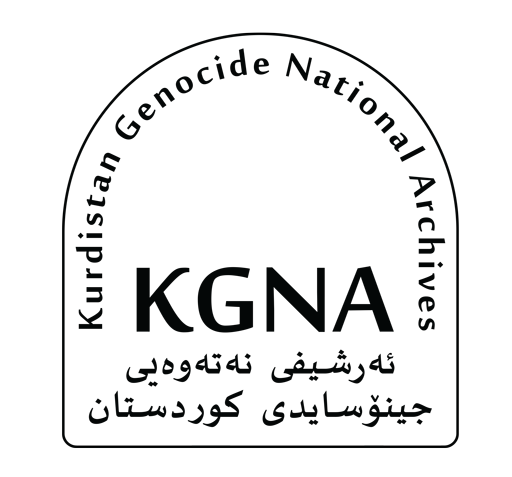

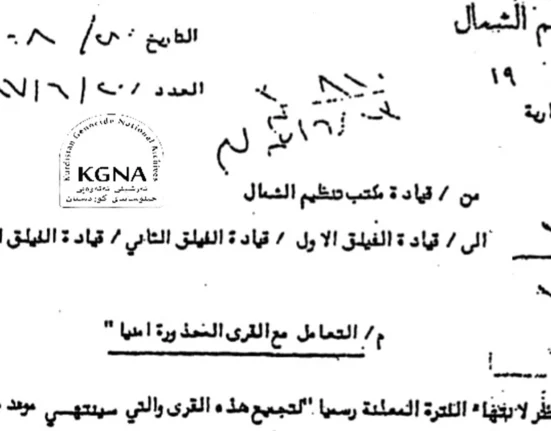

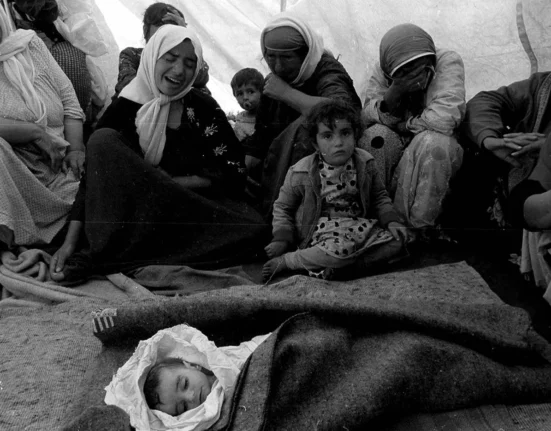

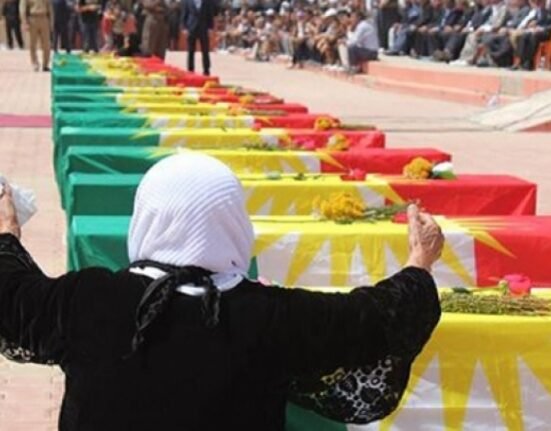
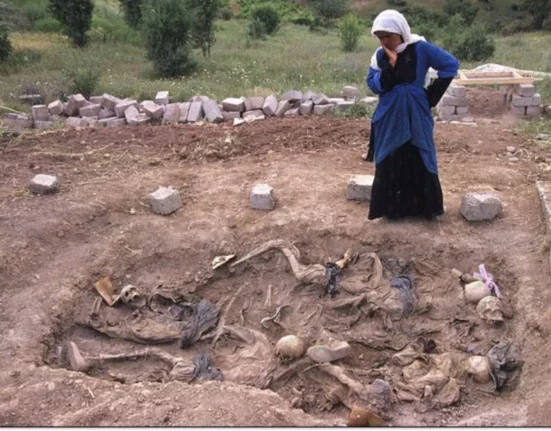
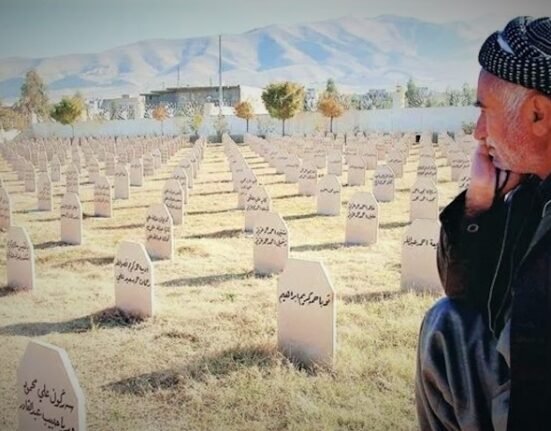

Leave feedback about this